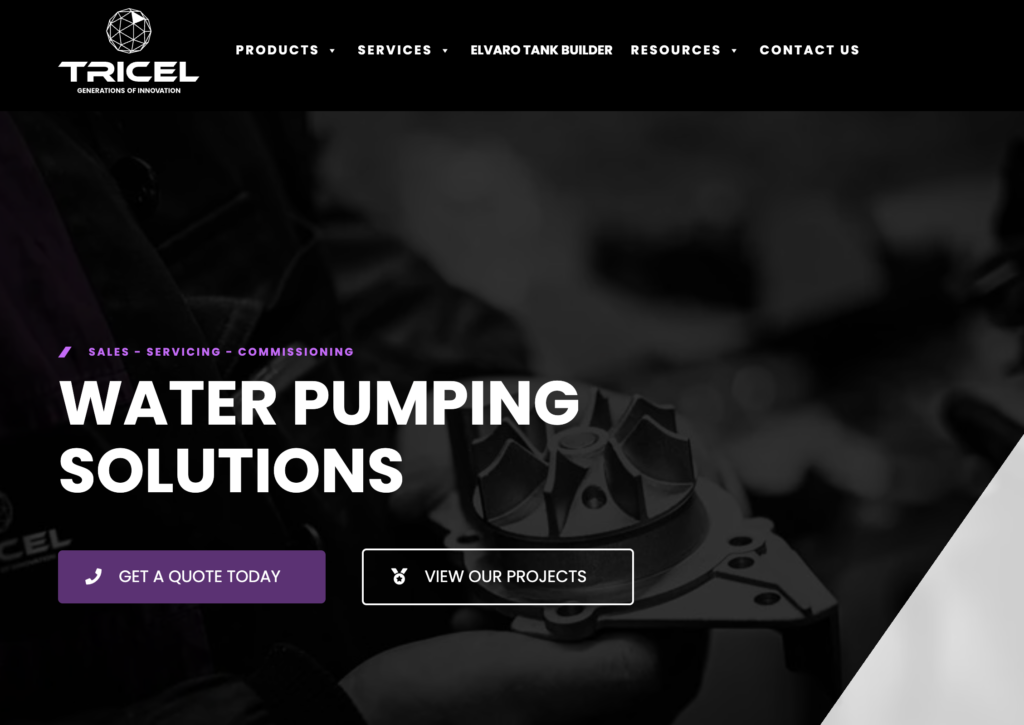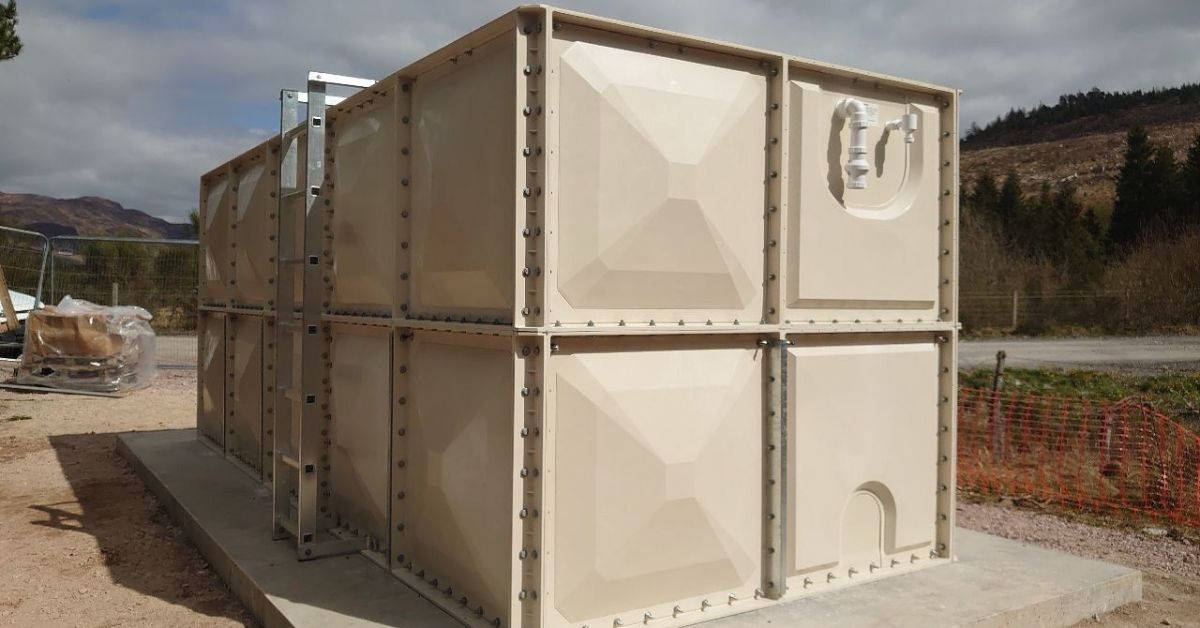
Rainwater harvesting tanks
Home » Cold Water Storage Tanks » Rainwater Harvesting Tanks

What is a Rainwater Harvesting Tank?
Rainwater harvesting tanks have emerged as a critical solution for sustainable water management, particularly in areas of water scarcity. The concept revolves around collecting, storing, and using rainwater for various applications, ranging from irrigation to potable uses.
Benefits of Rainwater Harvesting Tanks
At Tricel, we have years of experience working with rainwater specialists. We can provide water storage solutions for drinking water (potable water), food preparation, irrigation, and sanitation, amongst other applications. We specialise in both boosted and gravity systems, and for specific sectional rainwater tank applications, please email our expert sales team with your exact requirements, and we can quote to suit.
- Water Conservation
Rainwater harvesting significantly lessens the strain on local water supplies, substantially conserving freshwater resources. This is especially beneficial in regions with limited water availability.
- Cost Savings
Property owners or businesses can considerably lower their water bills by utilising harvested rainwater for non-potable purposes such as irrigation and flushing toilets. Over time, the savings can offset the initial investment in the harvesting system. A property with an installed rainwater harvesting system can save between 40% and 50% on their water bills.
- Environmental Impact
Reducing runoff by collecting rainwater helps reduce the risk of flooding and erosion. Moreover, it decreases the burden on stormwater systems, which can be overwhelmed during heavy rains.
- Quality of Water
Rainwater is generally free from pollutants found in ground or surface water. When properly filtered and treated, it can be used for drinking and cooking, providing a cleaner alternative to other water sources.
Rainwater harvesting tanks Applications

Harvesting tanks are versatile and can be utilised in various scenarios, including:
- Residential Properties
Residential properties can install rainwater tanks on the roof to collect water. This water can be used for potable and non-potable applications such as drinking water, gardening, and flushing toilets.
- Commercial Buildings
Businesses can benefit from large-scale rainwater harvesting systems to reduce water usage and enhance sustainability practices. This is particularly useful for office buildings, hotels, shopping centres, and industrial facilities.
- Agricultural Applications
Farmers can use harvested rainwater for irrigation, reducing their reliance on groundwater and ensuring a more sustainable farming practice.
Installation Locations for Rainwater Harvesting Tanks
The installation location of rainwater harvesting tanks plays a crucial role in the efficiency and effectiveness of the system. Here are some common installation locations:
- Above-Ground Installations: Above-ground tanks are easy to install and maintain. They are ideal for locations where space is not restricted and can be integrated into the surroundings.
- Loft Installations: Loft tanks are suitable for properties with limited outdoor space. They take advantage of unused attic space, though structural integrity must be assessed to ensure the loft can support the water tank’s weight when full.
- Basement Installations: Basement tanks utilise space that might otherwise go unused. They offer easy maintenance access and can be integrated into existing building designs.
Ideal Solutions for Rainwater Harvesting
Sectional Tanks
Sectional tanks are modular systems that can be palletised and assembled on-site, making them suitable for large-scale installations where transporting pre-assembled tanks would be challenging. Our sectional tanks offer high capacity and durability, which is ideal for commercial and industrial applications.
TIF Tanks
Totally internally flanged tanks with no base-to-side joints or external corner joints – making them 100% buildable from the inside, unlike other internally flanged or externally flanged tanks.
A successful rainwater harvesting system example comes from Tricel’s installation at a commercial facility. They installed a large-scale rainwater harvesting tank to collect and store rainwater for non-potable uses.
Project Overview
Our client needed a rainwater harvesting tank with a usable capacity of 5,200 litres. From the start, they provided a detailed brief for the rainwater tank required for the new housing development. On installation day, the plant room posed a challenge as it was 250mm short in one direction.
Outcome
To address the limited space in the plant room, we specified an L-shaped TIF tank to ensure proper and safe installation and maintenance. Thanks to our versatile panels, we swapped two 500mm panels for a 750mm section, reducing the initial capacity loss by 50%.
Conclusion
Rainwater harvesting tanks provide significant benefits, including water conservation and cost savings, for residential, commercial, and agricultural use. By utilizing natural rainfall, you can cut water consumption and costs while supporting environmental conservation. If your next project requires a rainwater harvesting tank, email your project details to our sales team at websales@tricelwater.co.uk.
Read More...
- Cold Water Storage Tanks
- Case Studies
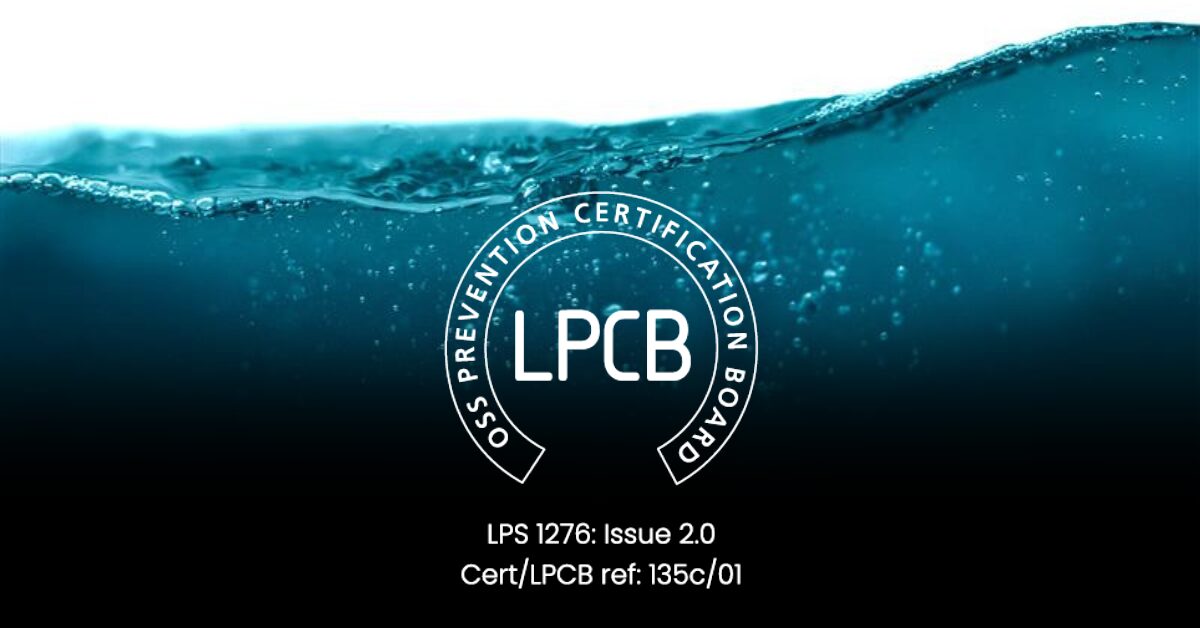
LPCB Approved Sprinkler Tanks
Our LPCB approved sprinkler tanks are designed and manufactured to the highest safety standards, providing reliable water storage for fire protection systems. Fully certified to meet Loss Prevention Certification Board requirements, these tanks ensure compliance, durability, and peace of mind for critical fire safety applications.
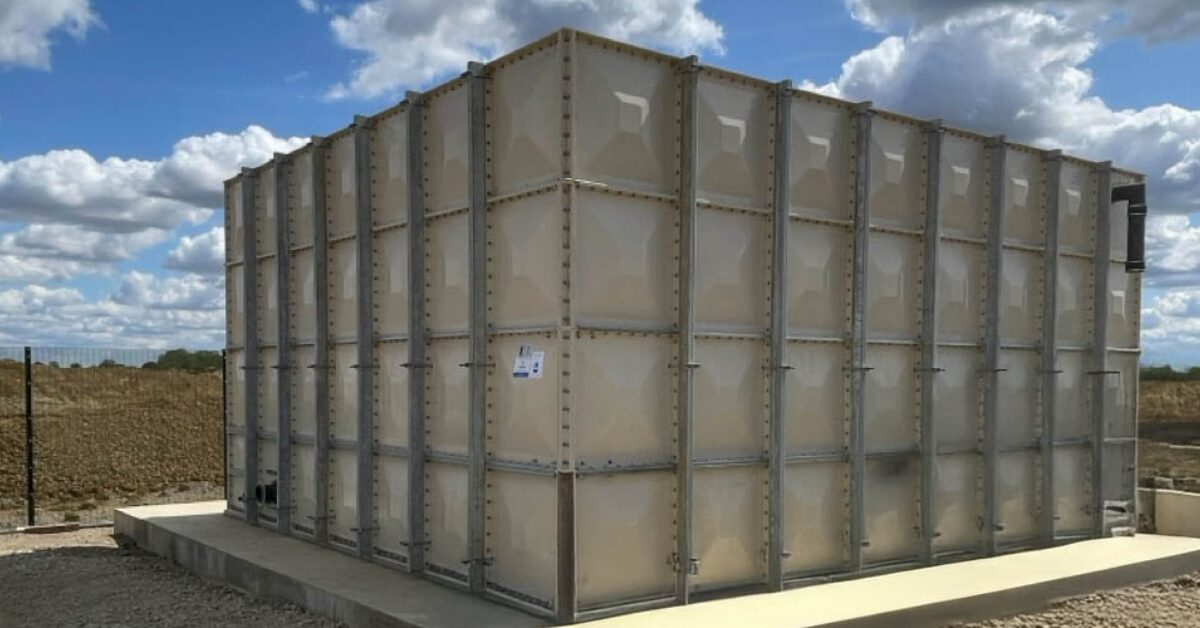
Custom Built Sectional Water Tanks: Tailored Storage for UK Infrastructure
Tricel Water UK delivers custom-built modular water tanks designed to meet the unique demands of modern infrastructure. From restricted access sites to WRAS-approved potable water systems, our bespoke solutions offer flexibility, durability, and full compliance with UK standards.

BS EN 13280 Cold Water Storage Tank Standards | Tricel Water UK
BS EN 13280 is the recognised British and European standard for cold water storage tanks, outlining essential design, construction, and performance requirements. Meeting this standard ensures water storage systems are safe, durable, and fully compliant with UK regulations.
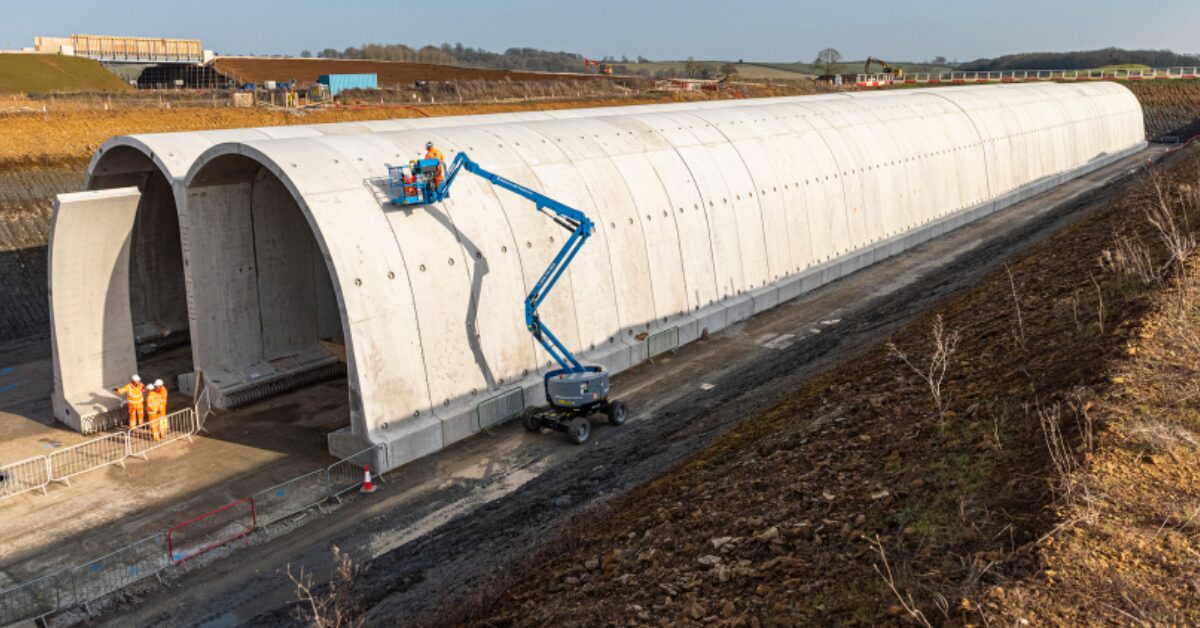
Water Storage Solutions for the UK’s Largest Infrastructure Project
Tricel Water designed, manufactured, and installed two large GRP water tanks (8 m × 7 m × 4 m) for HS2’s Greatworth Green and Chipping Warden Green Tunnel projects. A third tank is planned for early 2026, continuing Tricel Water’s key role in the Green Tunnel programme.
